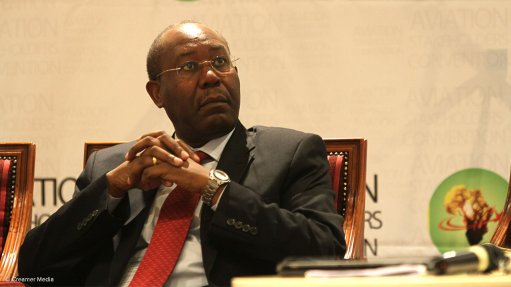
ICAO Eastern and Southern Africa director Barry Kashambo
Photo by: Duane Daws
While there have been undoubted improvements in aviation safety in Africa, much remains to be done. This was highlighted on Thursday by International Civil Aviation Organisation (ICAO) regional director Eastern and Southern Africa Office Barry Kashambo at the Fourth Aviation Stakeholders Convention.
African countries set targets for the improvement of aviation safety at a Ministerial conference in Abuja, Nigeria, in 2012. These are known as the Abuja safety targets.
In 2012, runway related accidents happened in Africa at a rate of 0.59 per million sectors; this had reduced to 0.39 during 2014. However, the Abuja target is a 50% cut in the 2012 figure by the end of this year.
The controlled flight into terrain accident rate was 0.17 per million sectors in 2012, falling to 0.11 in 2014. Again, the target is a 50% reduction in the 2012 rate by the end of this year.
Loss of control in flight accidents and serious incidents took place at a frequency of 0.17 per million sectors in 2012, but had only reduced slightly to 0.16 last year. Yet again, the target is a cut of 50% by the end of this year.
It was also agreed at Abuja that all States would provide the resources and support required for the implementation of ICAO State-specific plans aimed at addressing safety concerns and do so by July 2013. In fact, most of the States are yet to either implement or update these ICAO State-specific plans.
Every country was also meant to implement State Safety Programmes by the end of this year. However, out of 48 States, none has achieved Level 4 implementation of its safety programme. Only 14 have started the implementation of their programmes and the highest implementation yet reached is Level 2.
All international aerodromes in Africa were to be certified by the end of this year. So far, 45 international aerodromes in 12 countries have been certified: 28% of the total.
All African airlines were to have obtained International Air Transport Association (Iata) Operational Safety Audits (IOSAs) by the end of this year. So far, no African country has required any operators to undergo an IOSA. However, 20 airlines have gone through IOSA training in an Iata-sponsored programme and seven of these had been added to the IOSA registry by the end of December last year.
Slow progress had also been observed in other areas of aviation safety. These include the creation of fully autonomous, properly funded, civil aviation authorities (CAAs), as well as establishing regional safety oversight organisations and regional air accident investigation organisations.
"African States should, as a matter of urgency, provide the political and financial commitment to make aviation and aviation safety one of their national strategic objectives," argued Kashambo. "They should provide the resources to enhance and strengthen institutional capacity in the aviation sector. They should promote the establishment and strengthening of regional safety and accident investigation organisations (there is currently no regional air accident investigation organisation in Africa). They must work effectively to reduce the accident rate to levels below the global average. They must establish and strengthen well-funded CAAs."
"Strong countries must help weak ones," he also stressed. He cited as an example, and praised, South African support and assistance to Zambia.